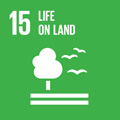- Docente: Monica Forni
- Credits: 6
- SSD: BIO/13
- Language: Italian
- Moduli: Monica Forni (Modulo 1) Augusta Zannoni (Modulo 2) Chiara Bernardini (Modulo 3)
- Teaching Mode: Traditional lectures (Modulo 1) Traditional lectures (Modulo 2) Traditional lectures (Modulo 3)
- Campus: Bologna
- Corso: Second cycle degree programme (LM) in Animal Biotechnology (cod. 8522)
Learning outcomes
The student knows the organisms that can be used as model for studying basic mechanisms. The student is able to perform basic activities in cell culture and gene expression experiments. The student is able to plan an experimental design and knows how to process data generated by experimentation.
Course contents
The course is divided into modules:
- Experimental design
- Ethical and practical aspects. Why you need to care about design.
- Control of the variability
- Experimental Unit Definition
- Identification of appropriate controls
- Determination of sample size
- Taking measurements
- Types of Experimental Design
- Basic statistical tests
- What happen if we use animals? Planning the experiment according to the "3RS"
- Publication of results
- Evaluation of gene expression by Real Time PCR
- Primers desig
- Choosing the appropriate chemistry
- Selection of housekeeping gene
- Efficiency analysis
- Data processing
- Cell Culture
- Different types of cell cultures
- Cell culture lab
- Cell lines maintainance
- Principals methods utilized
As concerns the teaching methods of this course unit, all students must attend Module 1, 2 online, while Module 3 on health and safety is to be attended in class. Information about Module 3 attendance schedule is available on the website of your degree programme
Readings/Bibliography
- Experimental Design for the Life Sciences. Graeme D. Ruxton Nick Colegrave. Oxford University Press ISBN-10: 0198717350
- Festing, M.F.W. et al, The Design of Animal Experiments: Reducing the Use of Animals in Research Through Better Experimental Design. Laboratory Animals Ltd ISBN 1-85315-513-6
- http://www.3rs-reduction.co.uk/
- http://www.gene-quantification.de/habilitation.html
- http://www.biomart.cn/upload/asset/2008/07/16/1216204807.pdf
Teaching methods
Preparatory Lectures followed by cooperative learning groups on fundamental topics for theoretical aspects.
Molecular biology lab.
Cell colture lab.
Assessment methods
The principal learning outcomes will be assessed:
- knowledge of the models for
basic biological studies
- ability to plan an experiment and to process data
-ability to perform a gene expression experiment
-ability to perform a cell colture experiment
The final grade will be based on a written exam about lecture topics (39 MCQ and 6 open questions).
This teaching is part of an Integrated Course, the final grade will be proportional to the CFU of each teaching:
35106 Policy and Legislation in Animal Biotechnology 3CFU 20%66437 Applied Experimental Biology 6 CFU 40%
66435 Applied Molecular Biology 6 40%
Teaching tools
Lecturesfiles and material for lerning groups.
Hands on in a fully equipped lab.
Office hours
See the website of Monica Forni
See the website of Augusta Zannoni
See the website of Chiara Bernardini
SDGs


This teaching activity contributes to the achievement of the Sustainable Development Goals of the UN 2030 Agenda.
